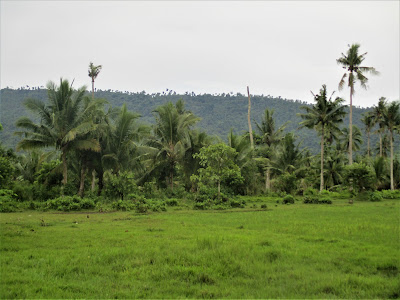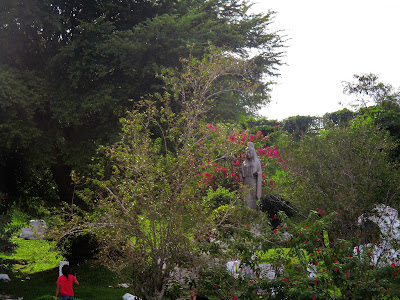TSUNAMIS ARE A POSSIBILITY IN THE PHILIPPINES
introduction
On July 06 2017 around 4pm the power goes off. Brown outs
are quite common but this time I could feel the house moving slightly. I
thought ok a slight tremor but then thought how far away is the epicenter. An
earthquake of 6.5 had happened in southern Leyte with a number of casualties
which was so sad.
With this tremor in the Dulag area 34 km from Tacloban was
only slight due to the distance from the epicenter so there should be no need
for worry but that is not the case. This barangay is 4km inland from the sea
and only a few meters above sea level. With every earthquake or tremor all
should be aware of the possibility of a Tsunami.
In this instance there was no tsunami alert given by the Pacific
Tsunami Warning Center. In this barangay the cell phone signal is not good.
When the brown out occurred due to the earthquake in southern Leyte we
immediately started our generator and started to watch news reports
This was a bit of a wakeup call as I started to think what
can be done to protect ourselves if a tsunami did develop and was headed for
this area. From what I have read there are two things can be done to ensure survival?
First is to get to higher ground (100 feet above sea level) or second put as
much distance between yourself and the coastline.
What if there was
Tsunami Alert
If there is a Tsunami alert the people who are vulnerable
should be able to receive maximum warning. The best option here is to get all
people to higher ground. Another alternative is to travel to Burauen which is
approximately 25 km from our barangay. We have an SUV but would need ample
warning. In addition some organization Time is the essence to avoid casualties.
From what I am aware barangay policy is woman, children,
elderly and people with disabilities are given priority to be transported to a
safe area such as Burauen. Others in this particular Barangay will walk to
higher ground. We have a mountain close by and with ample warning able body
people would be able to climb to a safe height. Another point is people will
have to take food and water for a few days just in case.
Lessons learnt from
Typhoon Yolanda (International name Haiyan)
Since Typhoon Yolanda (International name Haiyan) Filipinas
are quite aware of the dangers of sea surges and the need to evacuate inland
from the sea. A Tsunami has so much more additional power. In this area we are
4km inland from the sea but a Tsunami could bring the dangers of fast moving
sea water to this area.
Being aware of your
best options
At the same time you have to be ready yourself and know your
options and surroundings. At the back of our house the foot of the mountains
are around 1.5km away. Using the shortest and safest possible route to higher
ground is an unknown. There is marshy ground and at the foot of the mountain
the forest growth appears to be quite thick. There is a cleared access to this
mountain but it is 3km from our house.
IF THERE WAS A TSUANAMI ALERT HIGHER GROUND FROM OUR HOUSE IS NOT TOO
FAR BUT ACCESS IS QUESTIONABLE!
In addition what if the Tsunami warning came during the
night! The picture below is taken in the same position and it would be harder
to find your way to high ground during the night
THE SAME MOUNTAIN FROM THE BACK OF OUR HOUSE TAKEN AT NIGHT TIME.
In our case we have a few options with the first getting the
family to Burauien by vehicle. The second would be make your way to higher
ground. There is also an obligation to assist the children, the elderly and
people with disabilities in our barangay
Final note
below is a picture taken of the Pacific Ocean shoreline
between Luan and Dulag. Very peaceful and a sense of calm. We must always be
aware that our environment can change so quickly and an earthquakes can trigger
a tsunami. One cannot be complacent and must be prepared and have an action
plan if faced with the dangers of nature.
THE PACIFIC OCEAN CAN BE SO PEACFULL HARD TO IMAGINE A TSUNAMI IS A POSSIBILITY
References






Comments
Post a Comment